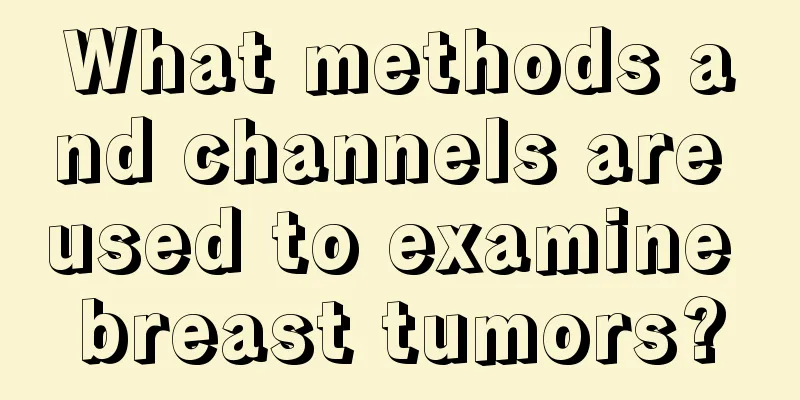How to check blood type

|
Each of us has our own unique blood type and different physique, and the way to check your blood type is very simple. You can use blood type test strips to test your blood type, or you can check it through medical methods. In general, some parents' blood types are not completely matched with their children's blood types. This has a lot to do with physique and chromosomes, and using test strips to detect blood type is a more convenient way. How to check blood type? 1. Blood type test paper Go to a regular pharmacy to buy blood type test strips for blood type testing. The latest blood type test paper can show A, B, AB, and O blood types. There are four "windows" in the blood type test paper, which contain different antibodies that can react with red blood cells. For example, when a drop of blood is dropped onto the test paper, it reacts specifically with the antibody A in "Window A", causing coagulation and the letter "A" to appear, which is type A blood; type AB blood will show coagulation in both "Window A" and "Window B". Type O blood has no antigens and therefore does not react with any antibodies. The "X" shape contains antibodies A and B. If the blood is type A, B or AB, the "X" will turn red and cover the letter "O" printed with waterproof red ink. If the blood is type O, even if it is rinsed with saline, the "X" will turn white and the "O" will remain red. Although blood typing using blood type test strips is convenient and quick, it requires pricking your finger to draw blood, which is a difficult process. Therefore, this method of blood typing is more suitable for emergency situations and humanitarian rescue. For friends who want to know their blood type, it is recommended that you go to the hospital for a blood test. 2. Blood test at the hospital Commonly used blood typing methods include hemagglutination test and gel microcolumn method. Blood typing during pregnancy is a necessary prenatal check-up item, which is a "hemolysis test" that mainly checks ABO hemolysis and Rh hemolysis. If the expectant mother's blood type is Rh-, her husband's blood type is Rh+, and the baby's blood type is Rh+, if it is the first child, there is generally no impact. However, if the second Rh+ baby is pregnant, Rh hemolytic disease may occur. If the expectant mother's blood type is O and her spouse's blood type is A/B or AB, the fetus may be A, B or AB. The expectant mother with O blood type has no anti-A antigen or anti-B antigen in her body. After being exposed to anti-A antigen or anti-B antigen, anti-A antibodies or anti-B antibodies will be produced in her body, which will react with the anti-A antigen or anti-B antigen in the fetus, making "ABO hemolysis" likely to occur. |
<<: Is the anti-rust coating on iron pans toxic?
>>: Is it okay to take a cold shower?
Recommend
How to remove oil stains on clothes
The weather is getting colder, and we wear more c...
Keloid scar on chest
Human skin is very fragile, especially keloids on...
How much does it cost to treat melanoma
How much does it cost to treat melanoma? This is ...
Can early ovarian cancer be cured?
Ovarian cancer is generally divided into three st...
Can I drink coffee when I have a cold or cough? Coffee lovers must know this
Coffee is the daily companion of many white-colla...
What are the early symptoms of lung cancer
What are the early symptoms of lung cancer? Early...
What is the reason for a red pimple on the penis
In today's society, women who do not pay atte...
What should I do if I have a lumbar muscle strain
For the problem of lumbar muscle strain, patients...
Methods for checking myocardial infarction
There are actually many symptoms of myocardial in...
There is a lot of dandruff on the hairline
The height of the hairline determines the width o...
The difference between subungual bleeding and onychomycosis
There are many pathological reactions on human fi...
What are the benefits of eating seahorse for women
Seahorse is a relatively common small animal in t...
One-day cost of chemotherapy for colorectal cancer
Colorectal cancer is one of the most serious canc...
What are the symptoms of bronchiectasis and vomiting blood?
Bronchial asthma is relatively common in our dail...
The effect of garlic sticking to the navel
The navel is located in the middle of the human a...









